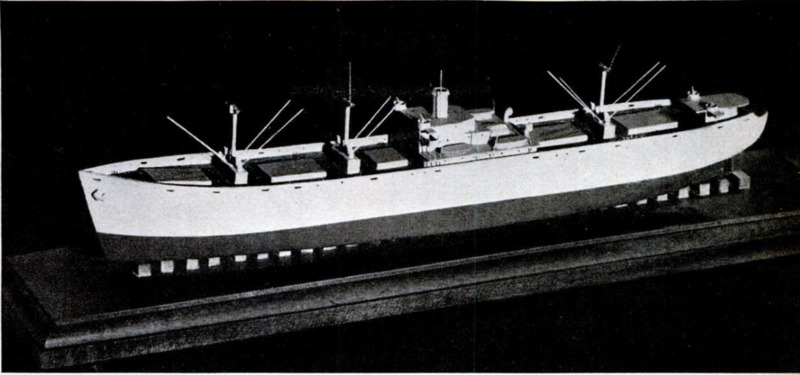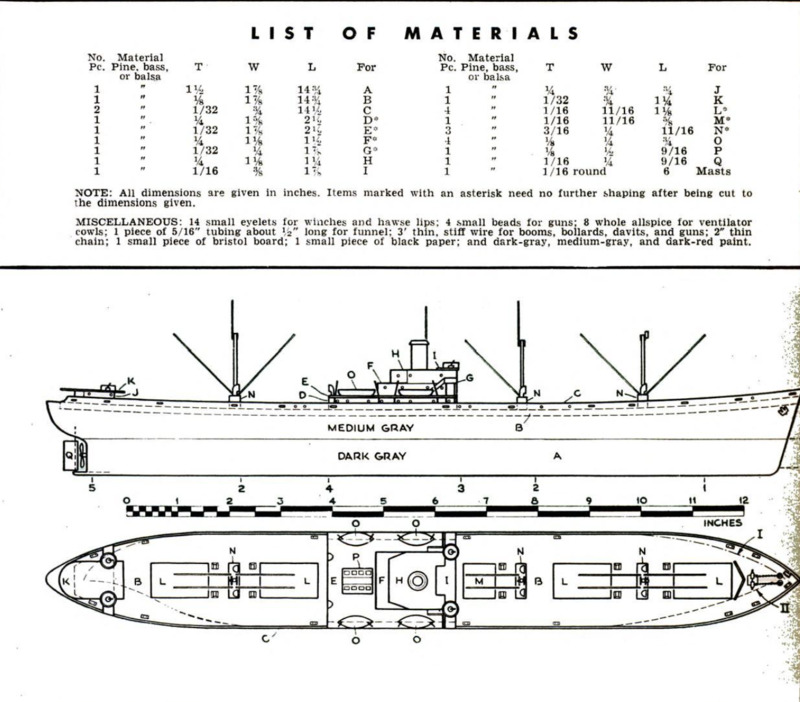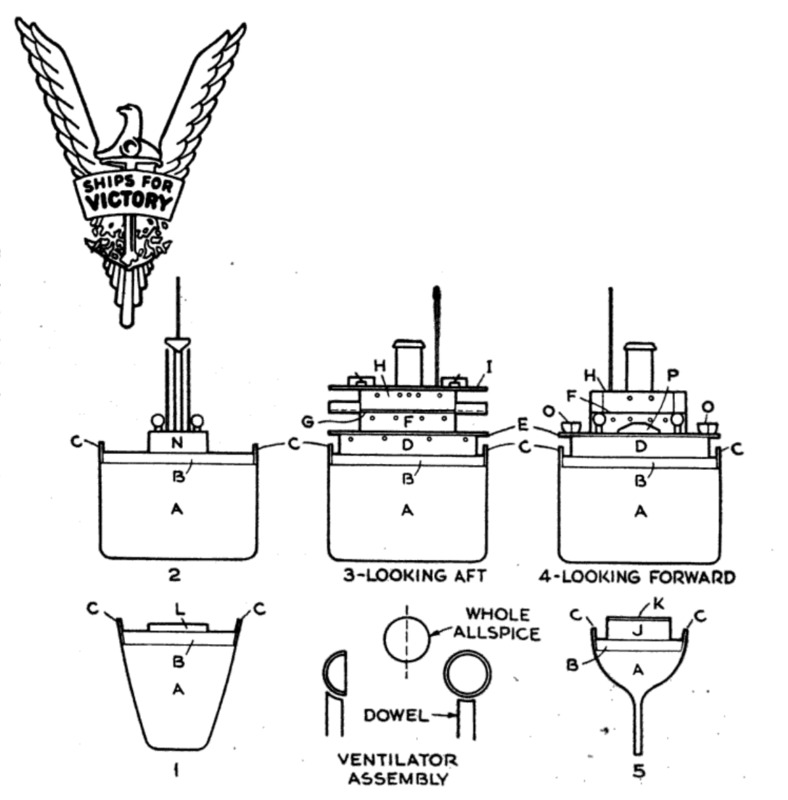S.S. Patrick Henry, Our First Liberty Ship
Contenuto
-
Titolo
-
S.S. Patrick Henry, Our First Liberty Ship
-
Article Title and/or Image Caption
-
S.S. Patrick Henry, Our First Liberty Ship. Cargo vessel that led the way in breaking the U-boat blockade offers appealing suject for model builders
-
extracted text
-
AS APPEALING a subject for model builders as any is this first of the Liberty ships to defy the U-boat packs of the North Atlantic. The accompanying drawings follow the basic plans upon which the 10,000-ton Patrick Henry was built. More recent Liberty ships have been modified, but the hull lines and the general appearance of the superstructure are unchanged. And since ease and speed of construction were essential for the 441%’ long prototype, details of the model were conceived in the same vein.
Only wood, paper, paint, pins, wire, and other easily obtained materials are required, and the usual household tools will suffice. Start by cutting the materials to the specified sizes and shape all flat pieces to the lines in the drawings. Plane and sandpaper the top of the hull block A to the proper sheer, and then shape the ends. The cross-section drawings and the dotted lines in the plan will be sufficient guide.
Cut B to the exact shape of the top surface of A, and reduce the width by sandpapering off 1/32” along each side to allow for the thickness of the bulwark C. Fasten B to A so that this margin is even all around, except at the very stern where B comes to the edge. Shape the bulwarks C so that they fit snugly in the rabbet formed by A and B, and shape the lower edge to match the top edge of A. Then cut the top edge parallel. The width is exactly 1/4 for the entire length. Glue C to A and B. If the wood is too stiff to hold a curve, soak it in boiling water and then bend it. The perforations can then be drilled. Two or three holes are drilled in a row for the slots, and excess wood is removed.
For the superstructure, rabbet the underside of H to hold G. Portholes are drilled in D, F, and H. Thin strips of paper protect the gun platforms and serve for bridge and stair rail. Masts are inserted into the mast houses N, as are the wire booms, which are then bent to proper angles. Each unit is glued to the hull after it has been painted. Ventilators may be made by cutting whole allspice in half, removing the centers, and mounting the half shells on bits of toothpicks, or metal ventilators may be used.
For the bollards, glue small pieces of black paper to the deck and drive two short pieces of wire through the paper into the hull. To make a winch, slip two small eyelets over wire to form the drum and fasten it to a square of black paper. Lengths of wire are inserted through small beads for guns. The anchor and screw are heavy cardboard.
The main deck of the vessel is painted a dull red. Dark gray is used on the hull below the waterline, and a medium gray above. The superstructure and the masts are medium gray, and the bollards, winches, and the inside of the funnel and the ventilator cowls are black. Such colors will match those on the real ships, drab hues having proved more concealing than camouflage in the last war.
-
Autore secondario
-
Theodore Gommi (writer)
-
Lingua
-
eng
-
Copertura temporale
-
World War II
-
Data di rilascio
-
1944-02
-
pagine
-
156-157
-
Diritti
-
Public Domain (Google digitized)
-
Archived by
-
Lorenzo Chinellato
-
Marco Bortolami (editor)





